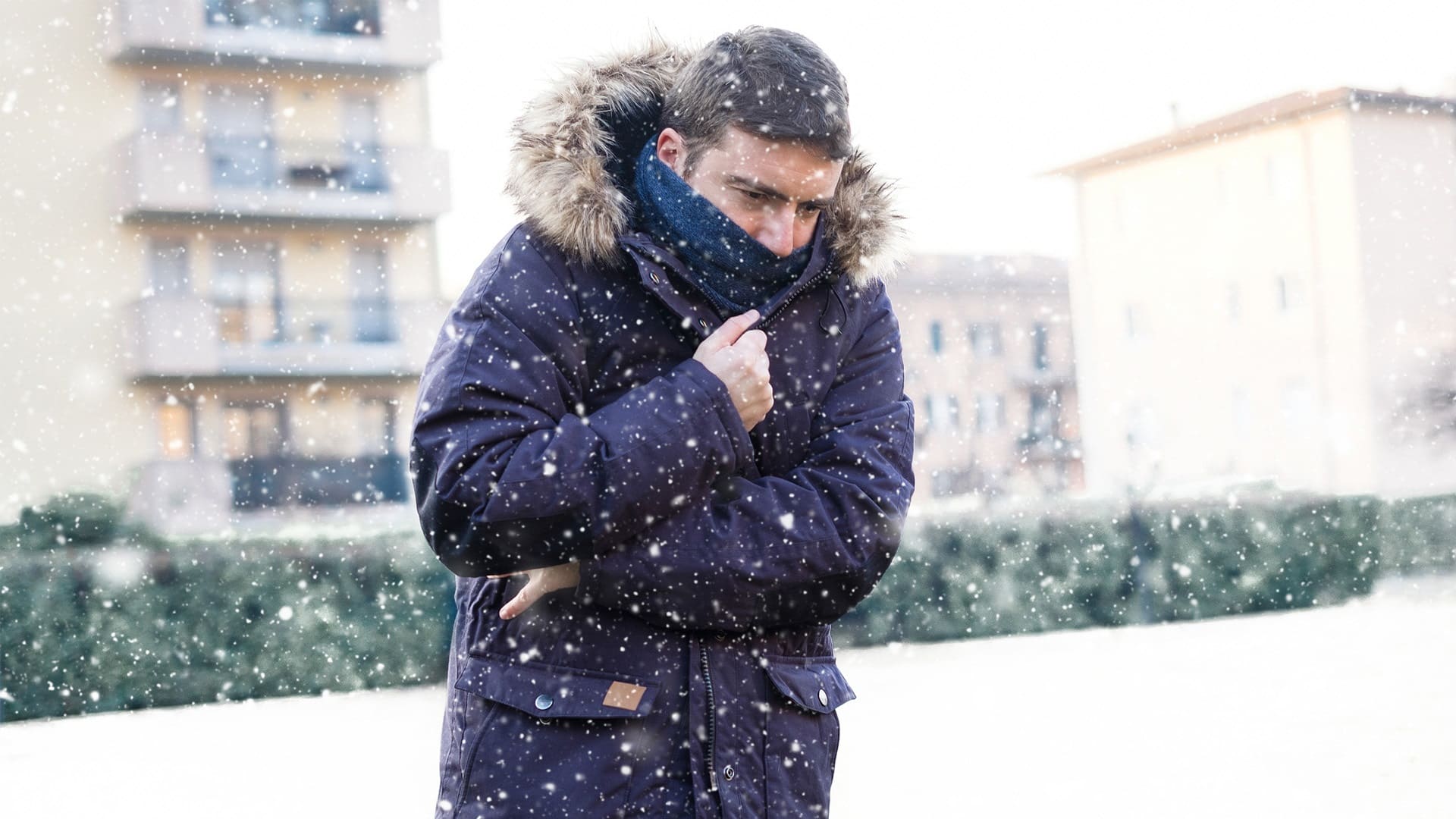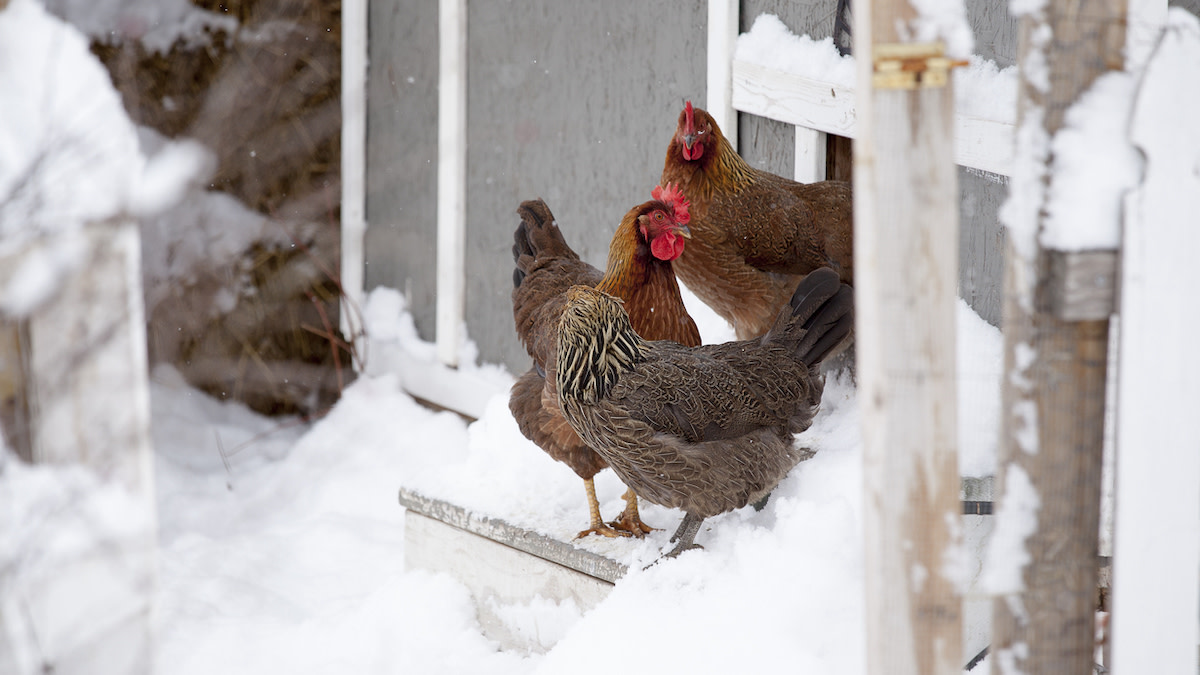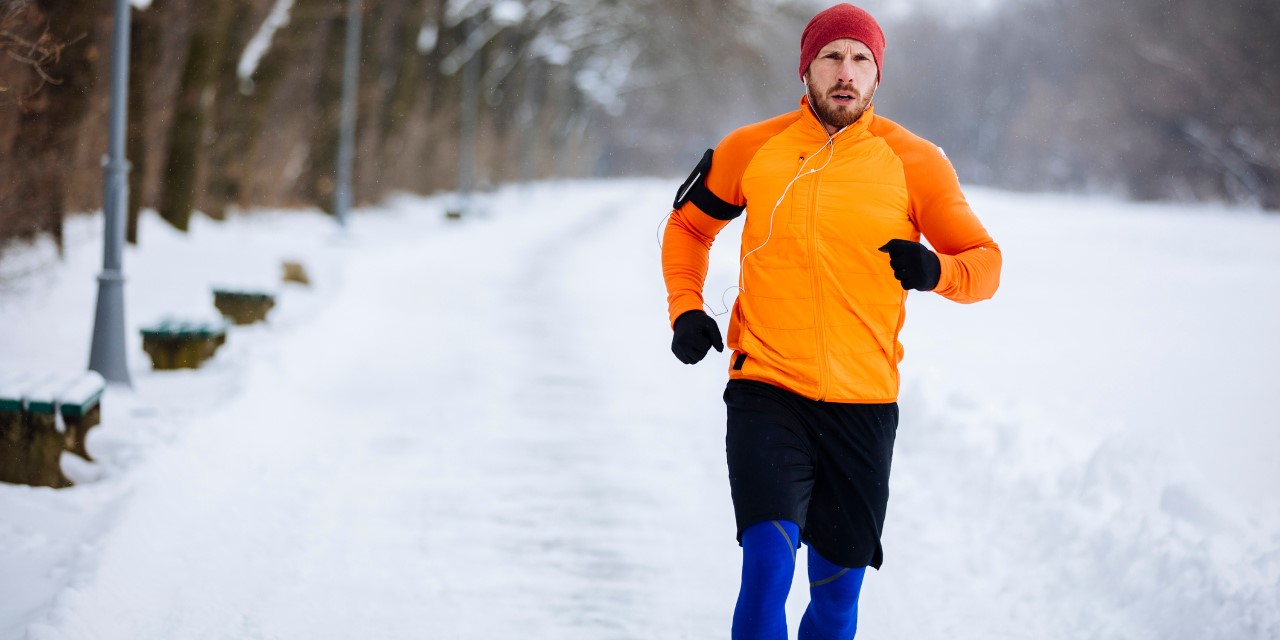Home>Weather and Climate>Coping With Frigid Temperatures: Tips And Advice


Weather and Climate
Coping With Frigid Temperatures: Tips And Advice
Published: April 16, 2024
Discover expert tips and advice for coping with frigid temperatures. Stay prepared and safe in extreme weather conditions with our weather and climate guidance.
(Many of the links in this article redirect to a specific reviewed product. Your purchase of these products through affiliate links helps to generate commission for Temperatures.com, at no extra cost. Learn more)
Table of Contents
- Understanding the Impact of Cold Weather on the Body
- Dressing for Success: Layering and Insulating
- Keeping Warm Indoors: Heating and Insulation Tips
- Nourishing the Body: Nutrition and Hydration in Cold Weather
- Staying Active: Exercise and Movement in Frigid Temperatures
- Mental and Emotional Well-being: Coping Strategies for Seasonal Affective Disorder
Understanding the Impact of Cold Weather on the Body
Cold weather can have a profound impact on the human body, affecting various physiological and psychological aspects. Understanding these effects is crucial for taking proactive measures to stay healthy and comfortable during frigid temperatures.
Physiological Effects
-
Vasoconstriction: When exposed to cold temperatures, the body's natural response is to conserve heat by constricting blood vessels in the skin and extremities. This can lead to a decrease in blood flow to these areas, potentially causing numbness and increased susceptibility to frostbite.
-
Increased Metabolic Rate: In an effort to maintain core body temperature, the body's metabolic rate often increases in cold weather. This can result in a higher calorie expenditure, making it important to consume sufficient nutrients to meet the body's energy demands.
-
Respiratory Challenges: Cold air can be harsh on the respiratory system, potentially triggering airway constriction and exacerbating conditions such as asthma. Additionally, the body expends energy to humidify and warm inhaled air, which can further strain the respiratory system.
Psychological Effects
-
Mood and Motivation: Cold, dark winter days can impact mood and motivation levels. Seasonal Affective Disorder (SAD) is a recognized condition characterized by feelings of lethargy, sadness, and a lack of interest in activities. Understanding the potential impact of cold weather on mental well-being is essential for taking proactive steps to mitigate its effects.
-
Sleep Disruptions: Cold weather can disrupt sleep patterns, leading to difficulties in falling and staying asleep. The body's natural circadian rhythm can be influenced by changes in temperature and light exposure, potentially affecting overall sleep quality.
By recognizing the multifaceted impact of cold weather on the body, individuals can take proactive steps to mitigate these effects and prioritize their well-being during the winter months. Understanding the physiological and psychological responses to cold weather is the first step in developing effective coping strategies and maintaining overall health and comfort in frigid temperatures.
Dressing for Success: Layering and Insulating
When it comes to braving frigid temperatures, dressing appropriately is paramount for staying warm and comfortable. The key to effectively combating the cold lies in the art of layering and insulating clothing. By understanding the principles of layering and selecting the right materials, individuals can create a protective barrier against the chill and maintain optimal body temperature.
The Art of Layering
Layering clothing serves a dual purpose: it provides insulation and allows for flexibility in adapting to fluctuating temperatures. The fundamental approach to layering consists of three primary components: base layer, insulating layer, and outer shell.
Base Layer:
The base layer, in direct contact with the skin, plays a crucial role in moisture management and thermal regulation. Opt for moisture-wicking fabrics such as merino wool or synthetic materials to effectively draw sweat away from the skin, preventing the body from becoming chilled due to dampness.
Insulating Layer:
The insulating layer is designed to trap body heat and provide additional warmth. Materials such as fleece, down, or synthetic insulation are excellent choices for this layer, as they effectively retain heat while remaining lightweight and breathable.
Outer Shell:
The outer shell serves as a protective barrier against wind, rain, and snow. Look for outer garments that are both waterproof and breathable, allowing moisture to escape while shielding against external elements. Additionally, features such as adjustable hoods, cuffs, and hem drawcords enhance the garment's ability to seal out cold air and moisture.
Selecting the Right Materials
When choosing clothing for cold weather, the type of material plays a pivotal role in determining its insulating properties and overall effectiveness in maintaining warmth.
Merino Wool:
Renowned for its natural insulating and moisture-wicking properties, merino wool is an excellent choice for base layers. It effectively regulates body temperature, keeping the wearer warm without causing overheating.
Synthetic Fabrics:
Synthetic materials such as polyester and nylon are prized for their durability and moisture-wicking capabilities. They are often used in base layers and insulating garments to manage perspiration and provide thermal comfort.
Down Insulation:
Down feathers are revered for their exceptional warmth-to-weight ratio, making them an ideal choice for insulating layers. Down jackets and vests offer superior warmth while remaining lightweight and compressible, making them convenient for layering.
Fleece:
Fleece fabric, known for its softness and insulating properties, is a popular choice for mid-layer garments. It provides warmth without adding excessive bulk, allowing for unrestricted movement.
By mastering the art of layering and selecting the right materials, individuals can effectively combat the cold and enjoy outdoor activities with comfort and confidence. Embracing the principles of layering and insulating clothing is a fundamental step in staying warm and cozy amidst frigid temperatures.
Keeping Warm Indoors: Heating and Insulation Tips
When the chill of winter sets in, maintaining a cozy and comfortable indoor environment becomes a top priority. Effective heating and insulation strategies are essential for creating a warm sanctuary amidst frigid temperatures. By implementing practical tips and optimizing the home's heating system, individuals can ensure a snug and inviting indoor space throughout the winter season.
Optimizing Heating Systems
-
Programmable Thermostat: Installing a programmable thermostat allows for precise control over indoor temperatures, optimizing energy usage and reducing heating costs. Programming lower temperatures during periods of absence or overnight can lead to significant energy savings while ensuring a comfortable environment upon returning home.
-
Sealing Air Leaks: Identifying and sealing air leaks around windows, doors, and electrical outlets is crucial for preventing heat loss. Weather-stripping, caulking, and insulating foam can effectively seal gaps and minimize drafts, enhancing the overall efficiency of the heating system.
-
Regular Maintenance: Scheduling routine maintenance for heating systems, including furnaces, boilers, and heat pumps, is essential for optimal performance. Professional inspections and servicing can identify and address potential issues, ensuring that the heating system operates efficiently and reliably throughout the winter.
Insulation Strategies
-
Attic Insulation: Adequate insulation in the attic plays a pivotal role in retaining heat within the home. Proper insulation helps prevent heat from escaping through the roof, reducing energy consumption and maintaining consistent indoor temperatures.
-
Wall Insulation: Ensuring that exterior walls are adequately insulated is crucial for minimizing heat transfer and enhancing the overall thermal efficiency of the home. Upgrading insulation in walls, particularly in older homes, can significantly improve heat retention and comfort.
-
Floor Insulation: In homes with elevated or uninsulated floors, adding insulation can prevent heat loss and create a more comfortable living environment. Insulating crawl spaces and floor joists helps maintain warmer floors and reduces the overall demand on the heating system.
Supplementary Heating Solutions
-
Space Heaters: Utilizing energy-efficient space heaters in specific areas of the home can provide targeted warmth while reducing the need to heat the entire space. Selecting models with built-in safety features and adjustable thermostats ensures safe and efficient supplementary heating.
-
Draft Stoppers: Placing draft stoppers at the base of doors and windows effectively blocks cold air infiltration, maintaining a more consistent indoor temperature and reducing the workload on the primary heating system.
By implementing these heating and insulation tips, individuals can create a warm and inviting indoor environment while optimizing energy efficiency and reducing heating costs. Prioritizing effective heating and insulation strategies ensures a cozy and comfortable home, offering respite from the winter chill.
Nourishing the Body: Nutrition and Hydration in Cold Weather
As the temperature drops and the winter season sets in, prioritizing proper nutrition and hydration is essential for supporting overall health and well-being. Cold weather can significantly impact the body's nutritional needs and hydration levels, making it crucial to adopt dietary and fluid intake strategies tailored to the demands of frigid temperatures.
Nutritional Considerations
In cold weather, the body expends additional energy to maintain core temperature, resulting in an increased caloric requirement. Consuming nutrient-dense foods that provide sustained energy is vital for meeting these elevated energy needs. Incorporating a balance of macronutrients, including carbohydrates, proteins, and healthy fats, supports optimal energy levels and helps the body cope with the demands of colder climates.
Carbohydrates serve as a primary source of energy and are particularly valuable in cold weather, providing readily available fuel for the body. Whole grains, root vegetables, and legumes are excellent sources of complex carbohydrates that offer sustained energy release, making them ideal choices for winter meals.
Proteins play a crucial role in supporting muscle function and repair, especially important for individuals engaging in outdoor activities in cold weather. Lean meats, poultry, fish, legumes, and dairy products are valuable sources of high-quality protein, contributing to muscle maintenance and overall physical resilience.
Healthy fats, such as those found in avocados, nuts, seeds, and olive oil, provide concentrated energy and aid in insulation, helping the body retain heat in colder environments. Additionally, omega-3 fatty acids, abundant in fatty fish like salmon and mackerel, offer anti-inflammatory benefits and support cardiovascular health, making them valuable additions to winter diets.
Hydration Strategies
Maintaining adequate hydration is equally crucial in cold weather, as the body's thirst response may be diminished in cooler temperatures. Furthermore, dry indoor air and increased respiratory water loss can contribute to dehydration, underscoring the importance of conscious hydration practices during the winter months.
While the sensation of thirst may be less pronounced in cold weather, the body's need for hydration remains constant. Consuming warm beverages such as herbal teas, broths, and hot water with lemon not only provides hydration but also contributes to overall warmth and comfort.
Incorporating water-rich foods such as soups, stews, fruits, and vegetables into winter meals can contribute to overall fluid intake. These hydrating foods not only provide essential nutrients but also support hydration, helping individuals maintain optimal water balance despite the challenges of cold weather.
By prioritizing proper nutrition and hydration in cold weather, individuals can support their body's resilience, energy levels, and overall well-being. Embracing nutrient-dense foods and conscious hydration practices tailored to the demands of winter ensures that the body remains nourished and hydrated, enabling individuals to thrive in the face of frigid temperatures.
Staying Active: Exercise and Movement in Frigid Temperatures
Engaging in regular physical activity is paramount for maintaining overall health and well-being, even amidst frigid temperatures. While the allure of staying indoors may be strong during winter, incorporating exercise and movement into daily routines offers a myriad of benefits, including improved mood, enhanced cardiovascular health, and increased resilience to cold weather. By embracing the following strategies, individuals can stay active and invigorated, even in the midst of winter's chill.
Embracing Outdoor Activities
Winter provides a unique opportunity to explore a variety of outdoor activities that capitalize on the season's offerings. Activities such as cross-country skiing, snowshoeing, and ice skating not only provide excellent cardiovascular workouts but also allow individuals to immerse themselves in the beauty of winter landscapes. These activities offer a refreshing change of scenery and present an invigorating way to stay active while embracing the unique characteristics of the season.
Indoor Exercise Options
For those who prefer indoor exercise, there are numerous options to stay active and maintain fitness levels during cold weather. Indoor cycling, yoga, and high-intensity interval training (HIIT) workouts are excellent choices for maintaining physical fitness and flexibility. Additionally, incorporating strength training exercises using body weight or free weights can help individuals build and maintain muscle strength, contributing to overall physical resilience.
Dressing Appropriately
When engaging in outdoor activities during cold weather, proper attire is essential for maintaining comfort and warmth. Layering clothing to provide insulation, wearing moisture-wicking fabrics, and donning appropriate headgear and gloves are crucial for protecting the body from the cold. By dressing appropriately, individuals can enjoy outdoor activities while minimizing the impact of frigid temperatures on their comfort and well-being.
Safety Precautions
It is important to prioritize safety when engaging in outdoor activities during winter. Being mindful of weather conditions, staying hydrated, and recognizing signs of cold-related stress or injury are essential for ensuring a safe and enjoyable experience. Additionally, being aware of potential hazards such as icy surfaces and taking precautions to prevent slips and falls is crucial for minimizing the risk of injury during outdoor exercise.
Consistency and Adaptability
Maintaining a consistent exercise routine throughout the winter is key to reaping the benefits of physical activity. By incorporating exercise into daily schedules and adapting to the season's unique challenges, individuals can establish a sustainable and rewarding approach to staying active. Whether it's a brisk walk in the snow-covered neighborhood or a rejuvenating yoga session at home, finding opportunities for movement and exercise is essential for overall well-being.
By embracing a proactive and adaptable approach to exercise and movement in frigid temperatures, individuals can experience the invigorating benefits of physical activity while navigating the challenges of winter. Whether indoors or outdoors, staying active during the colder months contributes to physical health, mental well-being, and an enriched appreciation for the unique opportunities presented by the season.
Mental and Emotional Well-being: Coping Strategies for Seasonal Affective Disorder
Seasonal Affective Disorder (SAD) is a type of depression that occurs at a specific time of year, typically during the winter months when daylight hours are shorter. The condition can lead to feelings of lethargy, sadness, and a lack of interest in activities, significantly impacting mental and emotional well-being. Coping with SAD involves implementing proactive strategies to mitigate its effects and promote overall mental wellness during the winter season.
Light Therapy
Light therapy, also known as phototherapy, is a widely recognized treatment for SAD. This approach involves exposure to artificial light that mimics natural sunlight, which can help regulate the body's internal clock and alleviate symptoms of depression. Light therapy sessions, typically lasting 20-60 minutes, are conducted daily and can be performed using specially designed light boxes or lamps. Incorporating light therapy into daily routines can effectively combat the effects of reduced sunlight exposure during the winter months, offering relief from SAD symptoms.
Read more: Snowstorm Safety Tips and Insights
Outdoor Exposure
Spending time outdoors and maximizing exposure to natural daylight can significantly benefit individuals coping with SAD. Engaging in outdoor activities during daylight hours, such as brisk walks, hiking, or simply enjoying the winter scenery, can provide a natural source of light and contribute to improved mood and energy levels. Embracing outdoor exposure, even in colder temperatures, offers an opportunity to counteract the effects of reduced sunlight and enhance mental well-being.
Exercise and Physical Activity
Regular exercise has been shown to have a positive impact on mental health, making it a valuable component of coping strategies for SAD. Engaging in physical activity, whether indoors or outdoors, releases endorphins and promotes a sense of well-being, helping to alleviate symptoms of depression. Incorporating exercise into daily routines, such as yoga, aerobics, or strength training, can contribute to improved mood and overall mental resilience during the winter months.
Mindfulness and Relaxation Techniques
Practicing mindfulness and relaxation techniques can be instrumental in managing SAD symptoms and promoting emotional well-being. Activities such as meditation, deep breathing exercises, and progressive muscle relaxation offer effective ways to reduce stress, enhance self-awareness, and cultivate a sense of calm. By integrating these techniques into daily routines, individuals can develop valuable coping mechanisms for navigating the challenges of SAD and maintaining mental equilibrium.
Social Support and Connection
Maintaining social connections and seeking support from friends, family, or support groups is essential for combating the isolation and emotional impact of SAD. Engaging in meaningful social interactions, whether in person or virtually, fosters a sense of belonging and provides opportunities for emotional expression and support. Building and nurturing social connections can serve as a vital source of resilience and comfort for individuals coping with SAD.
By implementing these coping strategies, individuals can effectively manage the symptoms of Seasonal Affective Disorder and prioritize their mental and emotional well-being during the winter months. Embracing light therapy, outdoor exposure, exercise, mindfulness, and social support offers a holistic approach to addressing the challenges of SAD, empowering individuals to navigate the season with resilience and emotional equilibrium.










